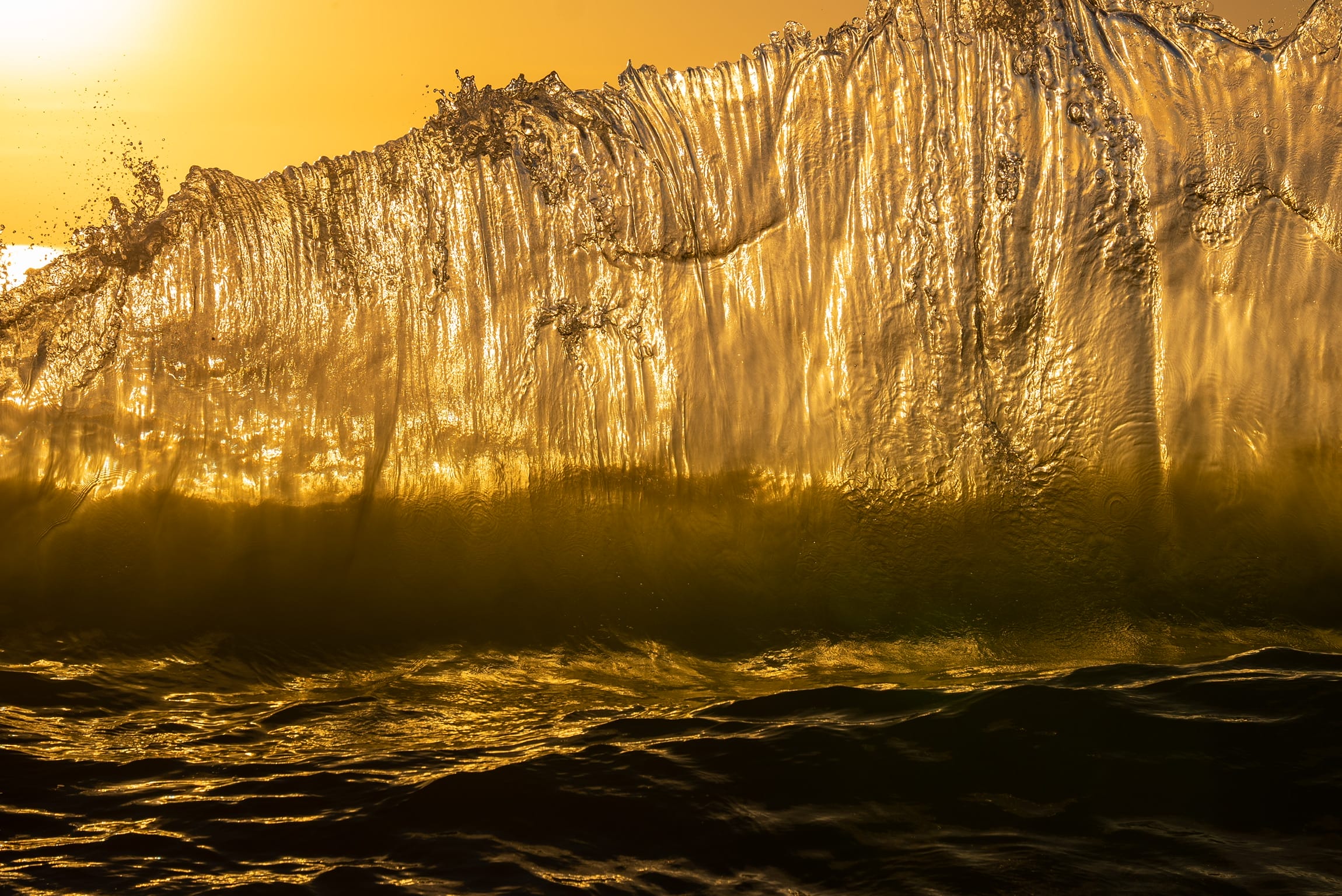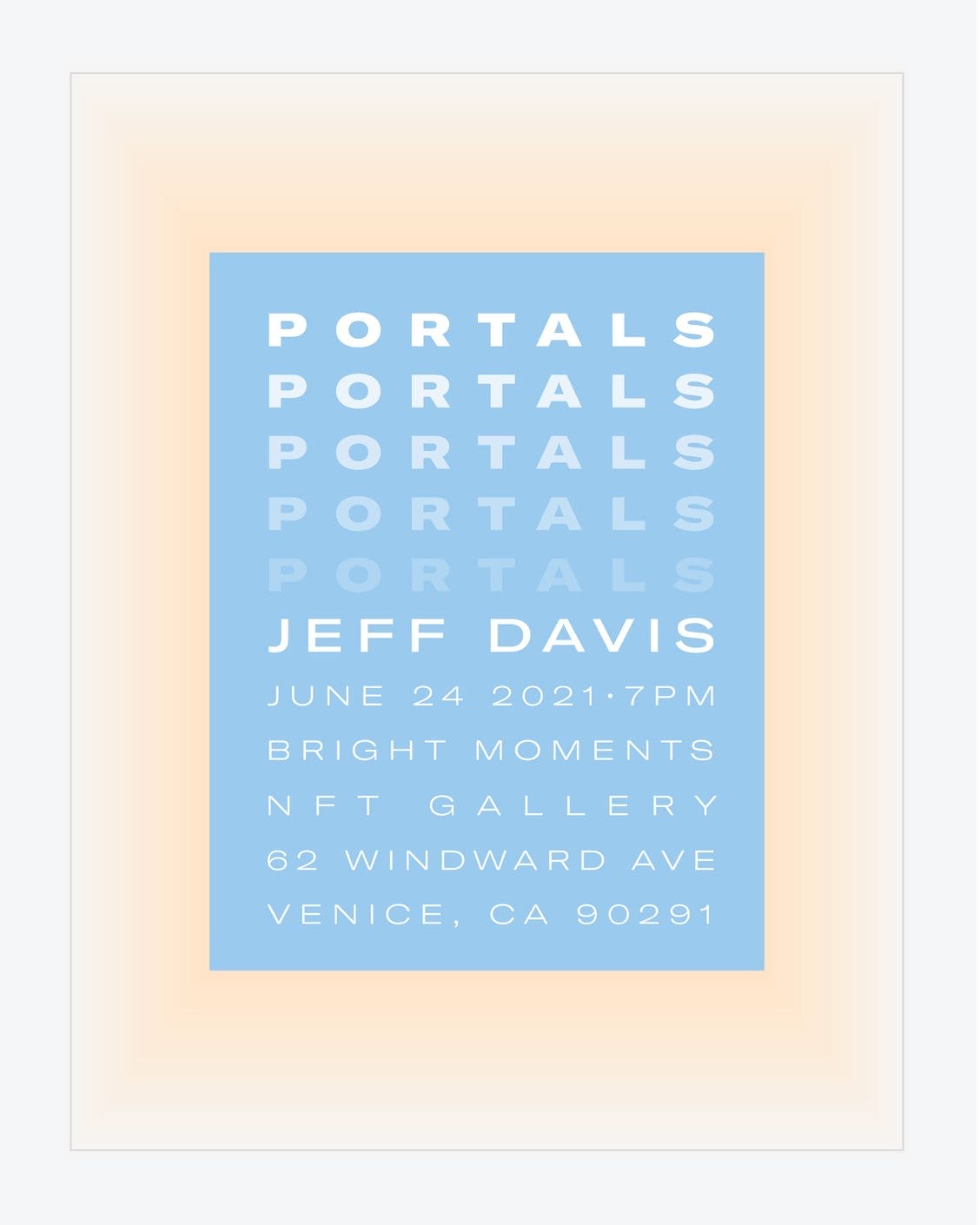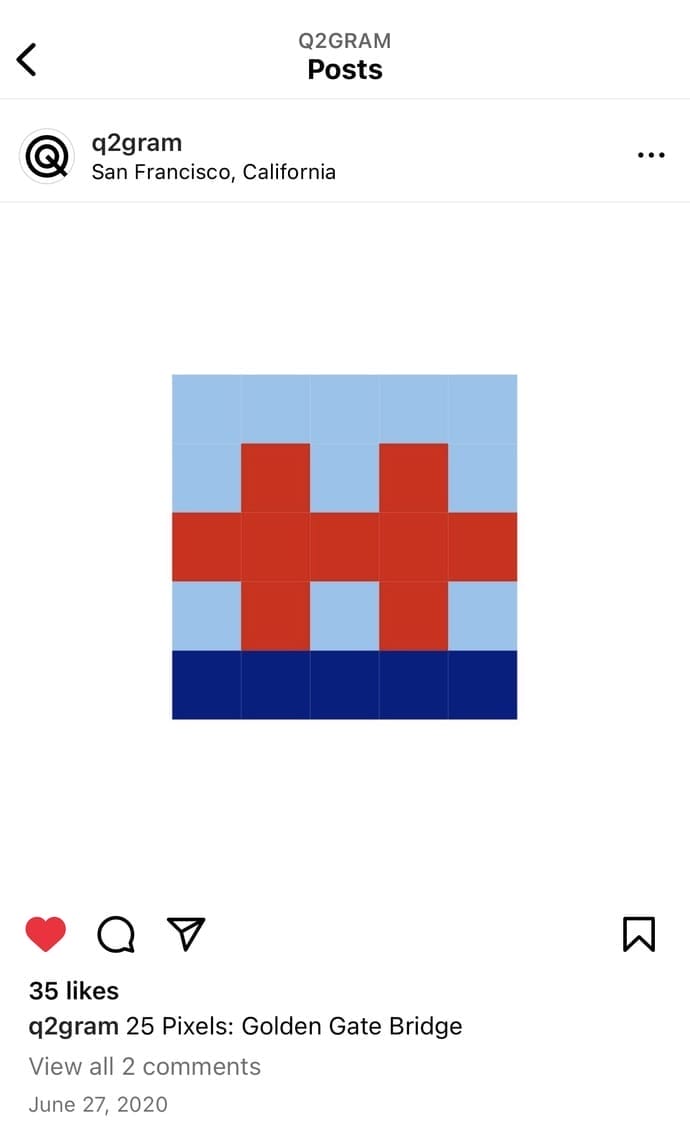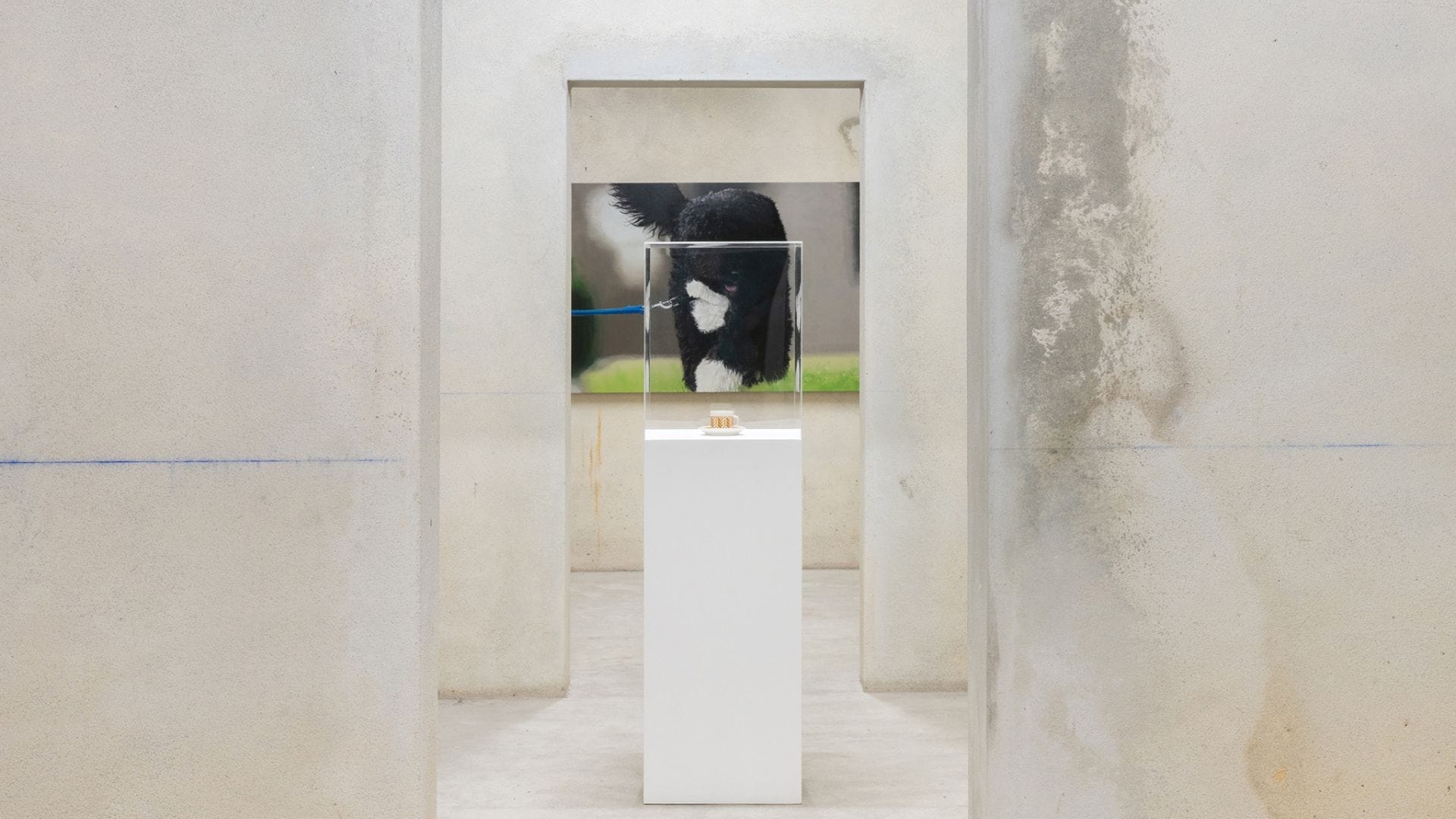
Bright Moments Founder Seth Goldstein in Conversation with Fakewhale
Bright Moments takes a lead in merging art with blockchain technology, set on a global mission to produce one of the most iconic digital art collections yet.
By blending real-world events with on-chain experiences, international organization Bright Moments curates, promotes, and produces unique art showcases that serve as a melting pot for artists and collectors, connecting them in the very act of art creation itself.
Central to the identity of Bright Moments is its organization as a decentralized autonomous organization (DAO), where decisions are collectively made by CryptoCitizens, whose distinctive digital identities are minted at each new stop on the journey, ensuring the community’s heart beats in unison with every step forward.
In conversation with Fakewhale, Seth Goldstein, founder of Bright Moments, offers a personal look at his journey blending blockchain technology with art — revealing key insights and experiences that have shaped his vision for Bright Moments and the future of digital art as a whole.
In Conversation with Seth Goldstein
Fakewhale: Seth, could you take us through your personal journey into the intersecting worlds of art and blockchain technology? What were the defining moments or insights that guided you to where you are today in the digital art landscape?
Seth Goldstein: When I was a kid in the late 70’s, my dad worked as a quality assurance consultant for computer companies up and down Boston’s Route 128. He tested new machines and software packages, looking for bugs. One night he brought me to his office at Applicon, an early CAD pioneer, and showed me a digital image of a bear. It was the first computer graphic I had ever seen.
My real passion growing up, though, was theater. I started as a child actor in avant garde productions at the American Repertory Theater in Cambridge, MA. In 1984, when I was 14, I was cast by Robert Wilson for his restaging of the Cologne section of the “Civil WarS” and he became a huge influence on me. I studied Dramatic Literature at Columbia and afterwards went to work as Wilson’s archivist at the Byrd Hoffman Foundation. In 1992 had an idea of using CD-Rom technology to capture his creative process with the Interactive Multimedia Archive Project.
I brought this project to Germany, where I met Jeff Shaw who had just started the Multimedia Lab at the Zentrum fur Kunst und Medientechnologie (ZKM) in Karlsruhe. He invited me to continue the interactive archive work and so in 1993 I helped William Forysthe of the Frankfurt Ballet develop Improvisation Technologies.
I returned to New York in 1995, just when the World Wide Web was starting to emerge. I had a couple of early Web gigs writing HTML code for Agency.com and Epicurious.com before starting my own Web advertising firm, SiteSpecific. We had a lot of fun creating new marketing campaigns (before it all became so toxic) and sold the firm to a larger agency a few years later. I spent the following 25 years raising my two boys, and starting and investing in new companies: investment research (Majestic Research), social media (Del.icio.us), and music (Turntable.fm). In 2018 I started a blockchain community center in North Beach SF called Node. I also spent a lot of time painting abstract oil paintings.
Fakewhale: From your perspective, what is the role of digital art in today’s society?
Seth Goldstein: If software is eating the world, then digital art is a key nutrient. It is the native cultural layer for creating space to breathe in an attention economy that threatens to suffocate us with our own endless scroll. The practice of using code to create art, as opposed to using it to generate transactions, is what keeps us human. Yes, we can disconnect from our screens and touch grass, but inevitably we decide to capture that leafy image and feed it back into our algorithms of influence. Digital art establishes an individual presence and a perspective that can’t simply be optimized to the highest CTR. The class of generative artists working today will be revered in the future as the last tribe of artisanal coders who held out the promise of human digital creativity before the onset of AI.
Fakewhale: Looking back at the origins of Bright Moments, what were the key motivations and visions that sparked its creation, and how have these core ideas evolved or expanded with the organization’s growth since then?
Seth Goldstein: You can’t tell the story of Bright Moments without reflecting on the backdrop of the pandemic when it was born. Kristi and I moved from San Francisco to Venice Beach during the summer of 2020. The Bay area was bleak and we wanted to express some agency over our lives. Venice Beach promised a certain kind of creative light, and access to a beach-front lifestyle that was not under quarantine. We didn’t know many people in the community, and so we had no old routines to fall into. As Beckett says in Godot, “Habit is a great deadener.” Our morning commute was walking a few blocks to Menotti’s coffee shop, where we sat outside on the patio under the Venice sign and met new people.
I was feeling old as an entrepreneur, struggling to keep a pre-pandemic startup afloat. At the end of 2020, as therapy, I started to take photographs every day of the sun setting behind the Venice beach waves. With a long lens, and a fast shutter, I was able to capture this diaphanous quality.

I wanted to sell these photographs as prints, which led me to drop shipping on Shopify, but that felt cumbersome. I also started using these thousands of images I was capturing to train a GAN and generate synthetic AI sunset videos. I shared one of these early examples with my friend Fred who loved Venice beach and he suggested I mint these as NFTs on Foundation.
https://avc.com/2021/02/digital-art/
I woke up the next morning and realized that my NFT had been sold while I was asleep, and that there was ETH in my wallet. This was a breakthrough moment for me, as it dawned on me how significant this file format could be as a creative unlock.
This moment reminded me of what I felt with the dawn of the Web in the summer of 1995. In both cases, what had been a purely technical practice crossed over into a broader cultural movement.
Under the surface, I can look back now and see this tremendous pressure that had formed between the Covid-era practice of collecting, communicating and trading online, and the human desire to connect and collaborate and create in the real world. Venice Beach was a perfect place for this to converge. That was the origin story of Bright Moments, which started in a small physical gallery space underneath the Venice sign.
At the end of April, I reached out cold to the artist Jeff Davis, whose minimal, color-theory artworks I had admired on Twitter.

Spring 2021 was a unique moment in time when real world art shows had stopped, and a community of generative artists were minting their algorithms on-chain through platforms like Artblocks.

Fakewhale: The CryptoCitizens project is a core element of Bright Moments. Could you explain its inception, its philosophy, and how it complements the overarching goals of Bright Moments?
Seth Goldstein: The CryptoCitizen project was a pragmatic response to the question: how could we attract visitors to our gallery during the day time? While I was confident we could generate buzz for art openings on Thursday evenings, I was concerned that nobody would show up in the afternoon. So I thought that it would be a good idea to give away free NFTs to visitors to the gallery, which could also be a trojan horse for onboarding them into ETH wallets.
CryptoPunks was the canonical reference for the Venetians:; I thought it would be fun to localize such a collection based on the zany culture of Venice Beach, hence CryptoVenetians. At first I reached out to my partner Kristi who is a portrait artist and had long made oil paintings of street characters in North Beach SF. I thought she could design these pixel portraits, so I showed her some examples of CryptoPunks as we were driving to get our Covid Vaccinations. Instead, she screamed at me that she had no such experience and why would I ask her.
Plan B was Qian Qian, a brilliant designer and illustrator that I had known and worked with for years, and who had been sharing these beautiful, minimal 25-pixel artworks on IG throughout the pandemic:

Qian was interested. At the same time, I met Phil Mohun who had started coming to our regular circle meetings and joined the DAO. He was by far the most professional and organized member of our growing motley crew and so I tasked him with the responsibility of project managing our CryptoVenetian initiative.
We were lucky to be working with Jeff Davis at the time. He suggested that we consider minting the the Venetians on Artblocks, so that they could be generated on the spot by visitors to our gallery. We set up a call for Phil and Jeff’s partner, Erick (aka Snowfro) to talk through deployment. Phil prepared a Notion PRD:
CryptoVenetians is the working title for a limited release NFT drop modeled after CryptoPunks. It is intended to be the first NFT minted by the BRT DAO and will be available to guests who visit the gallery in Venice. CryptoVenetians will have a range of attributes which can be combined to create unique characters of varying rarity.
CryptoVenetian User Stories:
- As a cryptocurious passerby, I want an inexpensive way to “try” an NFT
- As an artist, I want to learn by example about how I could distribute my own art using NFTs
- As an investor, I want a fun way to feel like my contribution has created a tangible impact
- As an early adopter, I want proof that I own one of the first NFTs that Bright Moments ever created
Here was one of the first sample outputs that Qian designed at the beginning of May:

We moved from design to implementation to distribution quickly, and by the beginning of July we had a full daily schedule of visitors who had signed up online to come in and “live mint” their own unique generative art NFT.
The experience was fun: minters got to choose their own walk-on song, and then came running out of the back room to experience their reveal in front of their friends. There was a lot of excitement and drama that summer, as the floor prices of these “free” NFTs quickly rose as celebrities like Robert Iger, Chairman of Disney, collected theirs, and then the remaining 310 CryptoVenetians got minted out and heisted from us late on the night of August 10, 2021 by a disgruntled DAO member.
There are a couple of key principles that emerged from that summer which support the overarching goals of Bright Moments:
- Live minting is a thing. Providing a physical set and setting for an otherwise ethereal blockchain transaction helps memorialize the NFT. The live minting experiences we have designed for CryptoCitizens have inspired artists to experiment with new ways of minting their own work. For example, Aaron Penne came to mint his CryptoVenetian, which then inspired his collaboration with Boreta on Rituals. Tyler Hobbs came to see Rituals, which helped him come up with the live minting experience for Incomplete Control. The unique collector experiences that we developed with Ben Kovach for 100 Print, mpkoz for Metropolis, and Deafbeef for Hashmarks were all inspired by the live minting experiments of CryptoCitizens.
- Minting art = ownership of token = membership in DAO. Bright Moments has followed the edict of progressive decentralization through the (extremely) slow mint out of its 10,000 CryptoCitizens. The durability of our world-wide community of artists and collectors is based on the tangible IRL experiences that they have had with us. Each CryptoCitizen is an alignment of generating art, collecting art, owning a membership token in the DAO, and having an equal vote in its governance. NFTs have a wonderful capacity to perform multiple functions, in terms of expressing art, ownership, and other forms of utility, at the same time, and this is something that I think the CryptoCitizens have provided to Bright Moments as an organizational backbone.
- CryptoCitizens are global. As soon as we minted out 1,000 CryptoVenetians, we set our sights on the ambitious project of live minting 1,000 Citizens every few months in different cities around the world until we got to 10,000. Minting and revealing art in person takes time, although over the years the process has gotten smoother because of better mobile wallets and our own software development. Still, this real world friction established an organic, slow pace that defines our three-year roadmap. In addition, we decided to distribute the 1,000 NFTs in each city as follows: 333 would be airdropped randomly to existing Citizen holders, 333 would be available for purchase in advance as “Golden Tokens” to fund the roadmap and 334 would be distributed through a nomination process to “locals” in each community. This slow evolution of live minting communities, combined with the three different ways they are distributed, has created a strange but ultimately fair launch for the project. It has been rewarding to see people who got a free community mint in Venice Beach, end up winning a free airdrop in Berlin, and then purchase a Golden Token to Tokyo. While it is possible to form enormous communities quickly digitally, they tend to be thin and brittle compared to those that we have seen develop more slowly in person across multiple countries over the past few years. Some of my favorite memories have been seeing people who “know” each other via Twitter or Discord meeting IRL for the first time at a Bright Moments event.
Around the world in 10,000 NFTs pic.twitter.com/1pXoocgxpF
— Bright Moments (@brtmoments) January 5, 2022
Fakewhale: The choice to operate Bright Moments as a DAO is also key to the project. What inspired this decision, and in what ways has it influenced the organization’s trajectory and its community dynamics?
Seth Goldstein: I was tired of traditional venture capital finance, and the trickle down economics that it fostered. Traditional startups are encouraged to make big long term bets, raise a two-year runway, and fill out the organization accordingly. Modern venture portfolio theory assumes that 60% of the investments will fail, 30% will flounder, and 10% will succeed wildly and pay for the rest. I did not want to raise money, nor did I want to pay lawyers to create complex stock agreements and option plans.
I had been aware of DAOs for a few years since the emergence of Ethereum smart contracts first enabled them, and given our focus on NFTs the “product” it felt only right to choose a crypto-native form of organization. That being said, there were no best practices that I was aware of in terms of tokenizing a real-world operating team. And so I simply minted 10 million ERC-20 tokens that were called “BRT” and used these as a means of organizing the evolution of our nascent gallery. In April 2021, we started meeting Tuesday and Thursdays at 11a in the gallery for “circle meetings,” where we would take turns talking about ideas and plans for upcoming gallery shows. As artists, developers, and experts from the local community started to get involved, we used these tokens as a way of rewarding eachother for participation.
In July of 2021, we started to use these tokens, which were not available anywhere other than our wallet, as a means of geo-fencing our IRL minting of CryptoVenetians. The value of these CryptoCitizens started to rise, and soon we had two different tokenized communities– one based on the DAO BRT token, and the other based on the growing community of Citizen NFTs. Working with the DAO whisperer Aaron Wright, we converted all 10 Million BRT tokens into a new “city” of 1,000 NFTs called CryptoGalacticans. This enabled us to shift the DAO membership entirely to NFTs, where every one of the 10,000 Citizens would have an equal vote.
We have built out the DAO based on these live CryptoCitizen mints, 1,000 at a time in a different city around the world over the course of three years. There is no other form of ownership, governance or influence, other than these underlying NFTs, whose 45 x 45 pixels have all been generated on-chain.
Fakewhale: Given the fast-paced evolution of the digital art landscape, where do you foresee the scene heading in the upcoming years? Are there specific trends, technologies, or innovations that you’re particularly enthusiastic about or believe will significantly impact the future of digital collectibles?
Seth Goldstein: The obvious answer is AI, but that’s like talking about “e-commerce” in the late 90’s; it was starting to impact so many different industries that the term itself became useless. So, yes, AI is going to impact the creation, curation, and collection of digital art in all sorts of ways. It will be interesting to see how human agency gets established and communicated up and down the value chain. This is likely where the blockchain will play a key role in terms of authenticating provenance, although the AI models themselves are so large and evolving so quickly that it is hard to put them on-chain to close the loop. The Botto project is a good example of how fungible tokens can be used to govern the creation of non-fungible AI artworks. Fellowship.xyz and CyborgDAO are two projects that I am spending more time on.
The more subtle answer has to do with how we buy, sell and mint tokens. Increasingly, fewer clicks are required. What used to require us to go down through a series of authorizations and signatures now feels like moving up towards us. Over the last months we have seen how the Farcaster open transaction system, frames, and its native currency, $degen, has facilitated faster and cheaper voting, reading and viewing experiences. This is where the artists naturally flow, just as they do to cheap rents in urban landscapes. At the last minute before Bright Moments Paris we organized a collaboration between Zancan, Coinbase and Highlight to issue a free mint Aux Arbres that would commemorate Coinbase’s new French license. At 76,208 minted tokens, it is now the largest long-form gen art project, ever.
Fakewhale: In-person NFT minting is a groundbreaking concept that Bright Moments has pioneered. How do you believe this approach enriches the experience and perception of digital art among your audience?
Seth Goldstein: Only because of Covid had the concept of “IRL” become a unique product feature, even though the reality of humans being humans together is the oldest of commodities.
Since we first started live minting CryptoVenetians in Venice Beach in June 2021, we have gone on to live mint new communities in New York, Berlin, London, Mexico City, Tokyo and Buenos Aires. Along the way, we have designed a full range of IRL experiences – from a brutalist German power plant to a posh Mayfair boutique, from a white wall SoHo gallery to a festive Mexican courtyard, from a cyberpunk Shibuya skyscraper to a run down Argentinian theater. On one level, these are no different than minting tokens on your laptop in a cafe, but we have infused them with a narrative that fuses the tangible immediacy of a physical moment with the promise of on-chain permanence.
Memorability describes the future value of memory. This is a key measure of any work of art; it is also, more broadly, the measure of Bright Moments. Will we be remembered? In many ways, the collection of 10,000 CryptoCitizens that were minted initially in Venice Beach by chance and then played out across the world over three years is a story meant to be told and retold. Our city attributes are etched permanently on the blockchain, to be sorted and collected in sets that represent a full spectrum of our historical experiences. There are subplots along the way in the form of live mints with 100 artists who each generated 100 outputs.
Fakewhale: As Bright Moments continues to establish itself in various global cities, including the recent expansion to Venice, how do you choose these locations, and what role do cultural differences play in shaping the art and experiences in each city?
Seth Goldstein: Our first cities (Venice Beach, New York and Berlin) were chosen centrally by the DAO. After the success of the Venetians, the next choice was to head to New York City, which was a city that many of us knew well as the artistic hub in the United States. We felt that the evolution from a sandy storefront in Venice to a proper SoHo gallery on Wooster Street would be a powerful signal. Many of the generative artists we admired wanted to exhibit their work in New York.
After New York, we thought it was important to establish ourselves culturally, not just economically. We decided to head to Berlin, where “poverty was sexy,” and anything that smacked of American cultural exceptionalism would get booed off the stage. We sold two hundred Berlin Golden Tokens in advance and showed up at the monumental former power plant Kraftwek in November with the hope of booking the venue in the Spring. Germany was still in the grips of Covid lockdown and so many traditional companies were shying away from future commitments. We were fortunate to be able to rent the space, which provided us with a huge canvas on which to stage NFT Art Berlin.
After Berlin, we turned to the 4,000 Citizen holders in our DAO to choose our next cities. Here are the on-chain snapshots that show the voting for each of the cities:

For the last city, we decided that the symbolism of Venice to Venice was too perfect to ignore, and so we chose to complete our roadmap there during the public opening of the Biennale on 4/20.
Fakewhale: Throughout the journey of Bright Moments, which are the initiatives or milestones you are mostly proud of? And in that context, how do you envision the long-term direction of Bright Moments?
Seth Goldstein: Over the past three years we have developed technologies, workflows and skill sets that use generative technologies to create art experiences that bring people together in real life. These on-chain digital objects have provided a constant energy source for artists and collectors to gather around. We have survived extreme market conditions, Covid outbreaks, prima donna behaviors, technology breakdowns, Russian invasions, impossibly high ETH gas prices and a never ending battle with suitcases, airplanes and dirty laundry. Along the way we have generated unforgettable, ephemeral art experiences that always relate back to the tokens that attest to their occurrence. This is true for the monumentality of the CryptoBerliners revealed at Kraftwerk and for the impeccable craftsmanship of Matt Deslauriers’ Folio exhibition in Soho Square London. Looking back I am particularly proud of the 8-hour analog theater performance we staged last November at the Palacio Guerrico in Buenos Aires to reveal CryptoPatagonians, and the trek we took a few days later to collect Hashmarks from Deafbeef by a giant boulder on the Patagonian steppe. Somehow, we managed to go so deep into the logic of blockchain art that we transcended the need for technology altogether.
Fakewhale: Can you give us a sneak peek into any upcoming projects or exhibitions that Bright Moments is working on?
Seth Goldstein: Wait until the evening of Monday April 22 when we mint the 10,000th CryptoCitizen, CryptoVenezian #999.

fakewhale
Founded in 2021, Fakewhale advocates the digital art market's evolution. Viewing NFT technology as a container for art, and leveraging the expansive scope of digital culture, Fakewhale strives to shape a new ecosystem in which art and technology become the starting point, rather than the final destination.
You may also like
FAKEWHALE in conversation with Riccardo Benassi
In this conversation with Riccardo Benassi, Fakewhale explores the deep weave between language, tech
Silent Echoes: Cady Noland and the American Psyche
Cady Noland, born in 1956, is an American artist whose work has profoundly impacted the contemporary
Diogo Pinto, Diplomacia at Belo Campo – Galeria Francisco Fino, Lisbon
Diplomacia by Diogo Pinto at Belo Campo – Galeria Francisco Fino, Lisbon, 24.01.2025 – 07.03




